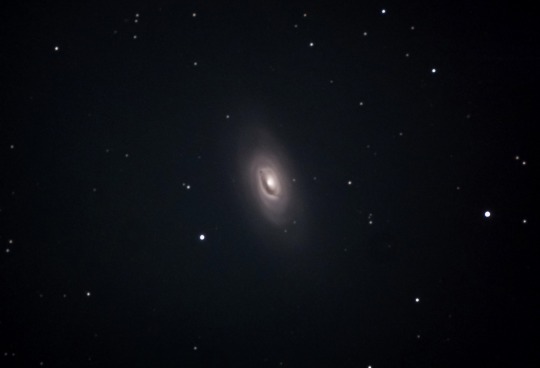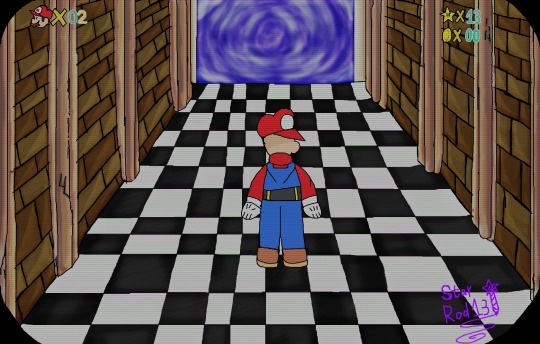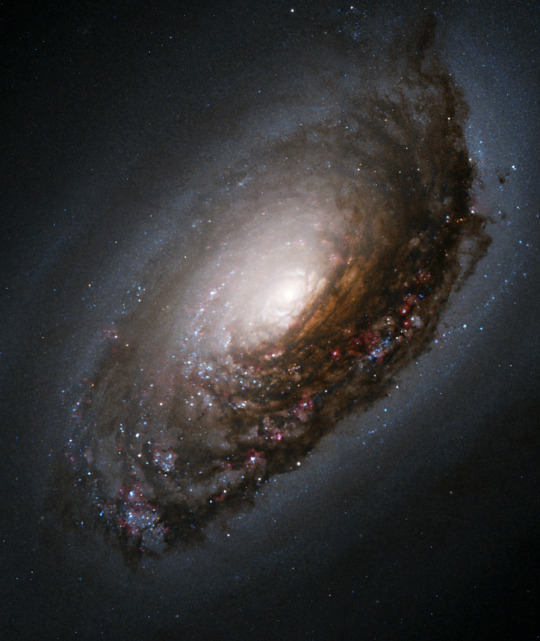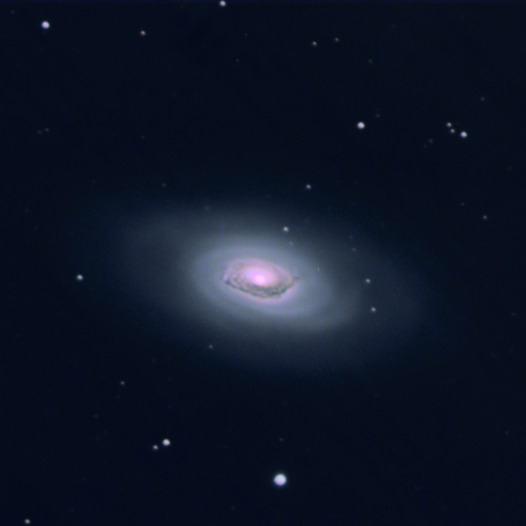#M64
Text

He’s so fucking dumb looking❤️❤️❤️❤️
607 notes
·
View notes
Text

This magnificent spiral galaxy is Messier 64 (M64), often called the Black Eye Galaxy or the Sleeping Beauty Galaxy. It’s nickname comes from its dark-lidded appearance in telescopic views. The spiral's central region, about 7,400 light-years across, is pictured in this reprocessed image from the Hubble Space Telescope. M64 lies some 17 million light-years away in the otherwise well-groomed northern constellation Coma Berenices. The enormous dust clouds partially obscuring M64's central region are filled with young, blue star clusters and the reddish glow of hydrogen associated with star forming regions. But imposing clouds of dust are not this galaxy's only peculiar feature. Observations show that M64 is actually composed of two concentric, counter-rotating systems. While all the stars in M64 rotate in the same direction as the interstellar gas in the galaxy's central region, gas in the outer regions, extending to about 40,000 light-years, rotates in the opposite direction. The dusty eye and bizarre rotation are likely the result of a billion year old merger of two different galaxies.
Image Credit: NASA, ESA, Hubble, HLA; Processing: Jonathan Lodge
#astronomy#space#science#universe#galaxy#spiral#spiral galaxy#black eye#black eye galaxy#sleeping beauty#sleeping beauty galaxy#m64#messier#stars#dust#gas#star formation#young stars#follow#like#reblog#the first star#the first starr#thefirststar#thefirststarr#nasa#apod#tumblr#blog#blogger
163 notes
·
View notes
Text

The Black Eye Galaxy, M64 // Don Elledge
Up close and personal, now you can really see the dark dust lane at the center! You can also see (or rather not see) a distinct lack of well-defined spiral arms!
This is likely caused by the two counter-rotating disks of equal mass that make up the Black Eye Galaxy. The inner disk contains the dust lanes at the center. These disks were likely created when M64 merged with a satellite galaxy in a retrograde (i.e., backwards) orbit.
#astronomy#astrophotography#messier marathon#galaxy#spiral galaxy#star-forming galaxy#black eye galaxy#messier#messier 64#M64#NGC 4826#coma berenices
44 notes
·
View notes
Photo

2000 Pokemon Franchise Magazine Ad
#2000#pokemon#pocket monsters#pokemon red#pokemon yellow#pokemon blue#game boy#nintendo#nintendo game boy#m64#nintendo 64#pokemon snap#pokemon stadium#pokemon pinball#pokemon trading card game#video games#print ads#magazine ads#video game magazine ads
187 notes
·
View notes
Text

10 notes
·
View notes
Text
M64: The Black Eye Galaxy Close Up

This magnificent spiral galaxy is Messier 64, often called the Black Eye Galaxy or the Sleeping Beauty Galaxy for its dark-lidded appearance in telescopic views. The spiral's central region, about 7,400 light-years across, is pictured in this reprocessed image from the Hubble Space Telescope. M64 lies some 17 million light-years distant in the otherwise well-groomed northern constellation Coma Berenices. The enormous dust clouds partially obscuring M64's central region are laced with young, blue star clusters and the reddish glow of hydrogen associated with star forming regions. But imposing clouds of dust are not this galaxy's only peculiar feature. Observations show that M64 is actually composed of two concentric, counter-rotating systems. While all the stars in M64 rotate in the same direction as the interstellar gas in the galaxy's central region, gas in the outer regions, extending to about 40,000 light-years, rotates in the opposite direction. The dusty eye and bizarre rotation are likely the result of a billion year old merger of two different galaxies.
For image credit and copyright guidance, please visit the image website https://apod.nasa.gov/apod/ap230720.html
#2023#your friendly neighborhood space nerd#space#galaxies#M64#The Black Eye Galaxy#Close up#astronomy
7 notes
·
View notes
Photo

Black-Eye Galaxy (M64)
6/20/2022
Taken with: Celestron AVX mount and EdgeHD 800 optical tube, Celestron OAG, ZWO 174mini guide camera, ZWO ASI294 MC Pro camera
120s x 20 Exposures x 300 Gain
Controlled With: Starsense Hand Control, ASIAIR Plus
Process: ASI DeepStack, Lightroom for color noise reduction and brilliance increase, color correction, dehazing
36 notes
·
View notes
Text

finally 100%ed mario 64 ds! :D
6 notes
·
View notes
Text

"This World Of Mine" ("every copy of M64 is personalized")
[title is inspired by the song "This World Of Mine" by musiclide!]
#super mario 64#every copy is personalized#every copy of mario 64 is personalized#super mario#super mario bros#m64#mario 64#nintendo 64#nintendo#creepypasta
7 notes
·
View notes
Text
M64 (Black Eye Galaxy)
The Black Eye Galaxy, first discovered by Edward Pigott, is approximately 17 million light years away from Earth. The interstellar gas around the edge of the galaxy rotates counterclockwise, opposite the stars on the inside. It is believed this oppositely rotating gas is due to M64 absorbing another galaxy it collided with, possibly over a billion years ago.

source: (1) (2)
#astronomy#astrophysics#outer space#galaxy#galaxies#space#nasa#space science#universe#black eye galaxy#m64#Messier 64#cosmos#cosmology#night sky
5 notes
·
View notes
Text
Houston Rebounds from Tough Weekend, Run-Rules HCU 10-0 #GoCoogs #M64
0 notes
Text

M64 Geno
138 notes
·
View notes
Text

SANTA & COLE / M64 COLOR / MIGUEL MILÁ / PIEDRA SUAVE / LAMP
0 notes
Text

The Black Eye Galaxy, M64 // David Cheng
Named for the large dark band of dust in front of its central region, the Black Eye Galaxy is home to about 100 billion stars and is about 17.3 million light years away (although that distance estimate is uncertain).
This galaxy was discovered in 1779 by Edward Pigott (1753-1825) and later added to Messier's catalog. it was William Herschel (1738-1822) who observed it in 1787 and gave it its moniker: "... contains one lucid spot like a star with a small black arch under it, so that it gives one the idea of what is called a black eye, arising from fighting."
#astronomy#astrophotography#messier marathon#galaxy#spiral galaxy#black eye galaxy#messier#messier 64#M64#NGC 4826#coma berenices
22 notes
·
View notes
Text

The Black Eye Galaxy. Image Credit: Shane Johnson | Jamie Kern | BSU Observatory.
Imaged in luminance and photometric R, V and B filters. Total exposure time ~25 minutes.
The Black Eye Galaxy (M64) is a relatively nearby spiral with an extraordinary amount of dark dust partially obscuring its nucleus. Red hues peeking out in these dust lanes are caused by reddening when the dust scatters the bluer light from stars embedded within it. The color difference between the center and spiral arms is due to an average age difference between the stars in these locations--blue stars have short lives, so as the star population ages the overall color appears more red.
#black eye galaxy#astrophotography#galaxy#m64#space#bsuobservatory#with 14-inch telescope#celestron edgehd 14
0 notes
Text
The Black Eye Galaxy
The Black Eye Galaxy, M64
#astronomy #galaxy #black_eye #m
Messier 64
A Spiral Galaxy in Coma Berenices.
Also known as NGC 4826
Image exposure:100.5 MinutesImage Size:34.3 x 26.9 arcminImage date:2023-05-18
I was planning for a three hour exposure of this super-interesting galaxy but the session was curtailed by cloud interference, nothing new there, so I achieved just one hour and 40 minutes.
Messier 64 is called the Black Eye Galaxy because of the…

View On WordPress
#amateur astronomy#Astronomy#Black Eye Galaxy#coma berenices#Cosmic Focus Observatory#cosmos#deep sky#Featured#image#M64#Messier 64#nature#Nebula#photography#science#Skywatcher EQ6-R#Skywatcher esprit 120#space#Universe#ZWO ASI071
0 notes